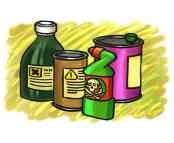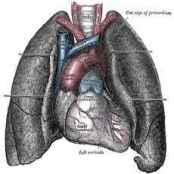|
Guide to Non-Toxic Paint and Low VOC PaintUsing only non-toxic paint low in VOC emissions is one of the most effective ways to create a non-toxic home and will go far in helping you to cure sick building syndrome symptoms. Below is a list of paint manufacturers who produce all natural, low VOC, or Zero VOC non-toxic paint.
Sick building syndrome symptoms such as nausea, headaches, and dizziness may be caused by VOC emisions from interior paints. These VOCs or Volatile Organic Compounds are gaseous toxic chemicals that evaporate from many brands of interior paints at room temperature and are major sources of indoor air pollution.
Higher exposure to VOC from paint - for example, amongst spray booth operators, artists, and professional painters - has been known to lead to permanent respiratory, nervous system, liver, or kidney damage. Alkyd oil-based paints are some of the worst emitters of VOC, while latex-based paints tend to be lower in VOC off-gasing. VOCs are the primary components responcible for that "new-paint smell" after paint jobs following rehab work, renovations, or home-improvements. VOC emision is usually due to the presence of chemicals in the paint such as the color pigments and compounds that improve durability and spreadability. That "new-paint smell" might symbolize a metaphorical new start for some tenants, but it can also indicate a new start of toxic VOC emissions too. Even low VOC paint or zero VOC paint may not necessarily be non-toxic paint due to other toxic ingredients such as Toluene, Ammonia, Phthalates, Heavy Metals, and Glycol esters. Watch out for paint ingredients like Toluene which is a common toxic solvent used in paints that can damage the heart, kidneys, and nervous system when inhaled. Toluene may also be referred to as Methyl Benzene. Another common pigment solvent and mildewcide is Ammonia. Ammonia can cause respiratory problems and eye irritation. Phthalates or Dibutyl Phthalate are added to improve spreadability and are toxic to the eyes and skin while heavy metals such as Cadmium and Cobalt are added to paint for their biocidic, quick drying, or pigment properties. These heavy metals are known neurotoxins which may also damage organs like the kidneys and liver as may the Glycol Esters which are added to paint to help pigments mix into the paint base. One of the primary ways to avoid or cure sick building syndrome and create a healthier non-toxic home is to greatly reduce the use of unsafe paints which contain the above toxic ingredients. Look for certified low VOC paint or zero VOC paint which has VOC emissions lower than 150 grams per liter (gm/liter). The EPA's VOC emission regulation says that "low VOC" means alkyd oil-based paints have 380 gm/liter VOC or lower and latex paints must have less than 250 gm/liter VOC emission. Also be aware that "Low Odor" paint isn't the same as "Low VOC" paint because smells from off-gased VOC fumes may just be masked by other chemicals. What you can't smell CAN STILL HURT YOU! There are now over 20 manufacturers of non-toxic paint, low VOC paint, no VOC paints, and safer all natural paints. Below is a list of the leading suppliers of safer paint products.
NO-VOC NATURAL PAINT SUPPLIERS
(800) 621-2591 - www.bioshieldpaint.com
The Old Fashioned Milk Paint Co.
Sinan Co.
LOW-VOC and NO-VOC LATEX PAINT SUPPLIERSAmerican Formulating &Manufacturing Enterprises (Safecoat)www.afmsafecoat.com
Benjamin Moore & Co. (EcoSpec)
Chem-Safe Products
ICI/Devoe Paint (Wonder-Pure)
Duron Paints (Genesis)
Frazee Paints (Envirokote)
lCl/Glidden (LifeMaster)
Kelly-Moore Paint Co. (Enviro-Cote)
Miller Paint Co. (Acro)
McCormick Paint (Natural Odor-Free)
PPG Architectural Finishes (PurePerformance)
Rodda (Horizon)
Sherwin-Williams (Harmony)
Strive for a non-toxic and more healthy home by purchasing only low voc interior paint. Again, look for low VOC or no VOC paints with less than 150 gm/liter VOC emissions. An investment in non-toxic paint is one of the best ways to cure sick building syndrome symptoms.
^ Return to the top of this Non-toxic Paint Guide <- Return to the Guide to Sick Building Syndrome
|





